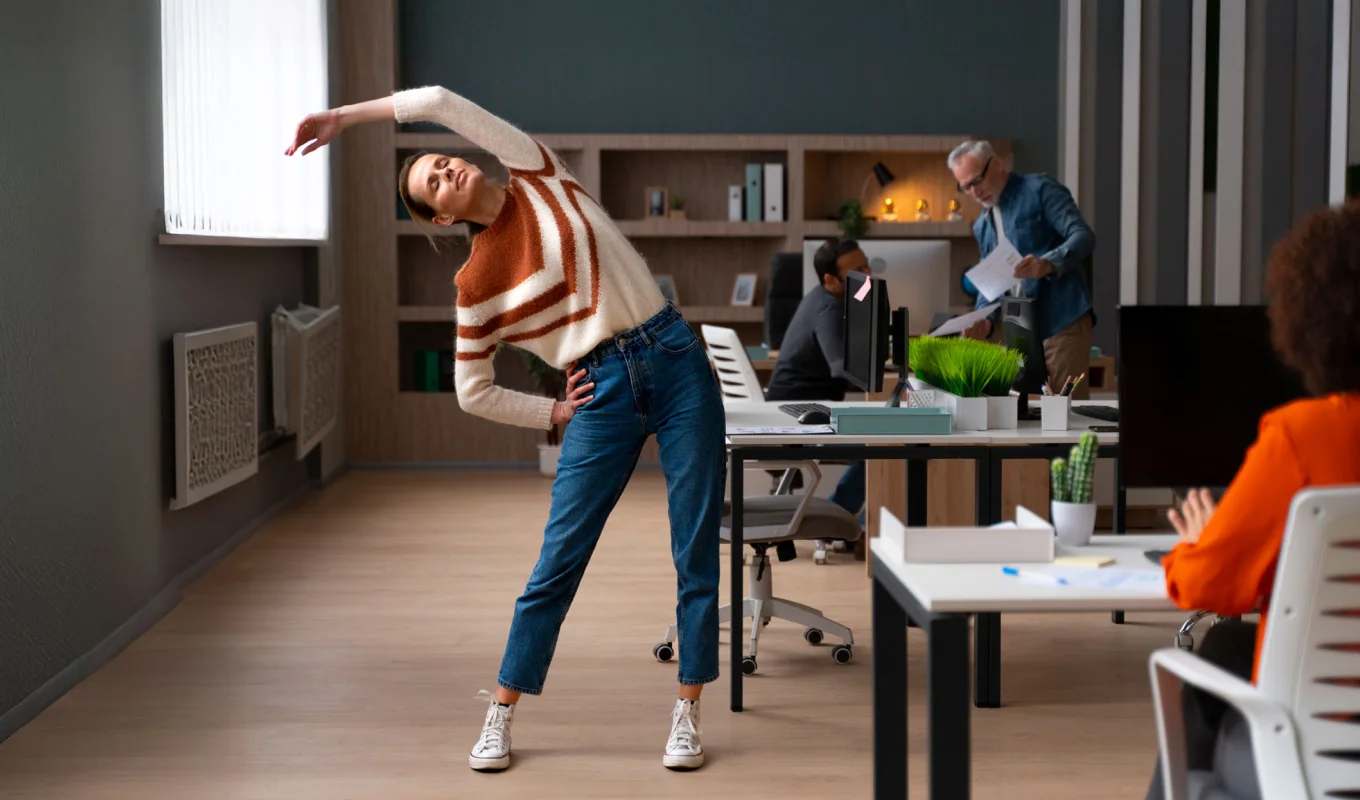
Key Takeaways
- Prolonged sitting can cause stiffness, poor posture, and chronic pain
- Physical therapists recommend desk-friendly stretches to reduce tension
- Regular movement breaks improve circulation and help you stay focused
Sitting all day at your desk might seem harmless, but over time it can lead to back pain, tight hips, and poor posture. In this blog, we explain how prolonged sitting affects your body and share expert-recommended stretches that you can do right at your desk to stay mobile, reduce discomfort, and feel better throughout your day.


Whether you work from home or in an office, sitting for hours at a time can take a serious toll on your body. Over time, inactivity can contribute to tight hip flexors, weak glutes, poor posture, and even neck and back pain.
But there’s good news—just a few minutes of movement each day can counteract many of these effects. Physical therapists often recommend quick, effective stretches to desk-bound patients to help reduce discomfort and improve function.
Spending long hours in a chair affects multiple systems in your body:
These stretches are simple, effective, and can be done right at your desk or in your workspace. Aim to take a movement break every 30–60 minutes.
Why it helps: Relieves mid-back tension and improves spinal mobility
Why it helps: Loosens neck and shoulder muscles strained from screen use
Why it helps: Lengthens hip flexors that get tight from sitting
Why it helps: Opens the hips and relieves lower back tension
Why it helps: Reverses forward posture and releases tension in the shoulders
Stretching is important, but so is setting up your space to support better posture.
If you experience ongoing discomfort, headaches, or numbness from sitting, it might be time to consult a PT. A physical therapist can:
Assess your posture and workstation setup
Recommend targeted stretches and strengthening exercises
Help address pain or early signs of repetitive strain
Thanks for signing up for our blog newsletter. Get ready for wellness tips and expert advice from our therapists.
Explore Our Blogs
